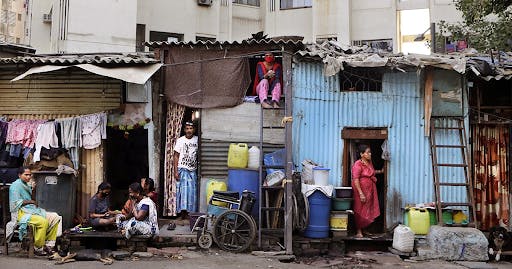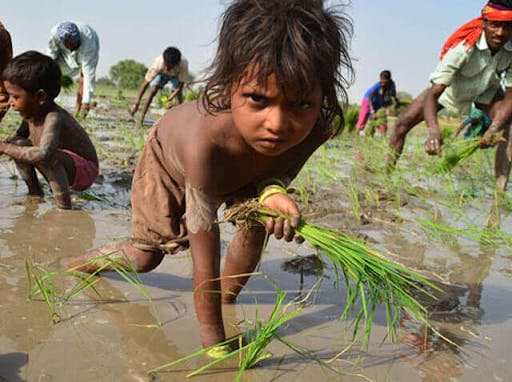Every child, irrespective of their economic situation, deserves a good education. Unfortunately, the reality looks quite different – over 175 million children globally are not enrolled in pre-primary education, with only 1 in 5 children being in school in low-income countries.
Poverty and education are interlinked – until children are able to satisfy their basic needs like food, shelter, and clothing, it will be much harder for them to learn – even though they’d like to. Living in poverty makes it difficult for children to meet their basic needs. In today’s blog post we’re going to discuss how poverty impacts education.
Poverty and education – heartbreaking statistics
To get a better understanding of this subject’s importance, and to see how dramatic the current situation is, let’s take a look at some statistics.
- If all students from low-income countries had basic reading skills, then 171 million people could escape poverty
- Every additional year of schooling a mother receives decreases the likelihood of infant mortality by up to 10%
- 250 million children between the age of 5 and 12 can’t read, write or count
- Poor children are 7 times less likely to finish school than rich children
It’s time to discuss in more depth how poverty influences education.
6 ways in which poverty affects education in the developing world
1. Literacy gap
Children from low-income families are less exposed to written and spoken language. In fact, they have seen and heard 30 million fewer words than their counterparts from well-off families. It’s safe to say that children living below the poverty line are linguistically anorexic. Books and the Internet are perceived as luxuries that impoverished families have no access to, which significantly limits their access to information and learning.
They’re also less likely to sing, read, and talk with their kids which deprives them of the possibility to improve their vocabulary.
2. High mobility
Poor families often change locations in order to seek employment, which is frequently seasonal. This leads to children dropping out of one school and enrolling in another – which significantly disrupts their education. They might experience the outsider syndrome – feeling like they don’t belong, as they constantly have to adjust to a new environment. Leaving their friends behind has a negative impact on their mood and, as a result, impedes their learning abilities.
3. Impaired brain development
Parents living in extreme poverty are less likely to afford proper nutrition, with their kids often being deprived of breakfast. Not eating enough can reduce the brain’s capacity, which has a negative impact on learning – this often results in poor students falling behind their classmates.
“Adequate nutrition is necessary for normal brain development. Nutrition is especially important during pregnancy and infancy, which are crucial periods for the formation of the brain, laying the foundation for the development of cognitive, motor, and socio-emotional skills throughout childhood and adulthood”.
Additionally, it’s not uncommon to experience drug abuse in a poor household – children that were exposed to drug use prior to their birth can have cognitive deficiencies.
4. Poor mental and physical health
One of the factors that limit school performance is stress, which children from underprivileged families are highly exposed to. Stress from bad housing conditions, insufficient nutrition, and violence can have an adverse effect on the child’s physical and cognitive development. This, in turn, can cause mental conditions that lower the student’s motivation and desire to perform well at school.

According to research by the Criterion Women’s Union – “When a person lives in poverty, the limbic system is constantly sending fear and stress messages to the prefrontal cortex, which overloads its ability to solve problems, set goals, and complete tasks in the most efficient ways.”
Being in a difficult financial situation lowers human intelligence. An experiment was run in Tamil, India assessing farmers’ intelligence prior to (worse off financially) and after harvest (better-off financially)– results showed a 10-point difference between these two scenarios.
What’s more, poverty has a detrimental effect on health. The poor often suffer from diarrhea, tuberculosis, malaria, schistosomiasis, and other diseases, which – if they don’t kill them – prevent them from attending school and getting an education. This further proves that poverty and education are interlinked.
5. The necessity to support the parents
Poor children start working early, and frequently don’t have the time to go to school, as they need to contribute financially to the household. Even if tuition is free, there are other expenses that the parents must cover like, lunch, uniforms, examination fees, etc. It’s a huge opportunity cost for them – while the children are in school, the family is deprived of getting an extra income.

This extra income is often prioritized over gaining education, even though it has a direct impact on future earnings – provided that the quality of education is good, which often isn’t the case in developing countries.
6. Not being able to get to school
The number of schools in developing countries is limited and the road infrastructure is often underdeveloped. This means that children from poor families have to walk for hours to get to school, and by the time they arrive, they’re exhausted, which negatively impacts their ability to focus and learn. Some kids skip school overall, as there is no school near the place where they live, while others go to great lengths to attend school.
For example, kids who live in the mountains of the Sichuan Province in China cannot use buses to get to school as there are no roads. In order to get to school, they put together a series of wooden ladders leaned against the cliffs. Only after the photos of the kids climbing in the mountains went viral, the government decided to replace the wooden ladders with steel ones and attached them to the mountainside for more safety. This further shows how desperate the children living in poverty are to get an education.
Poverty and education – final thoughts
Children living in poverty are often eager to learn but experience a lot of obstacles that prevent them from getting education. These include the necessity to financially support their parents, not getting enough food, which impairs their learning, or not having a school around.
Luckily, there are charities who fight for a better future. If you want to contribute to this fight, then install Altruisto and do good while shopping, at no extra cost to you. Part of the amount you spend during your shopping spree will go to selected charities working towards poverty reduction. Thank you!